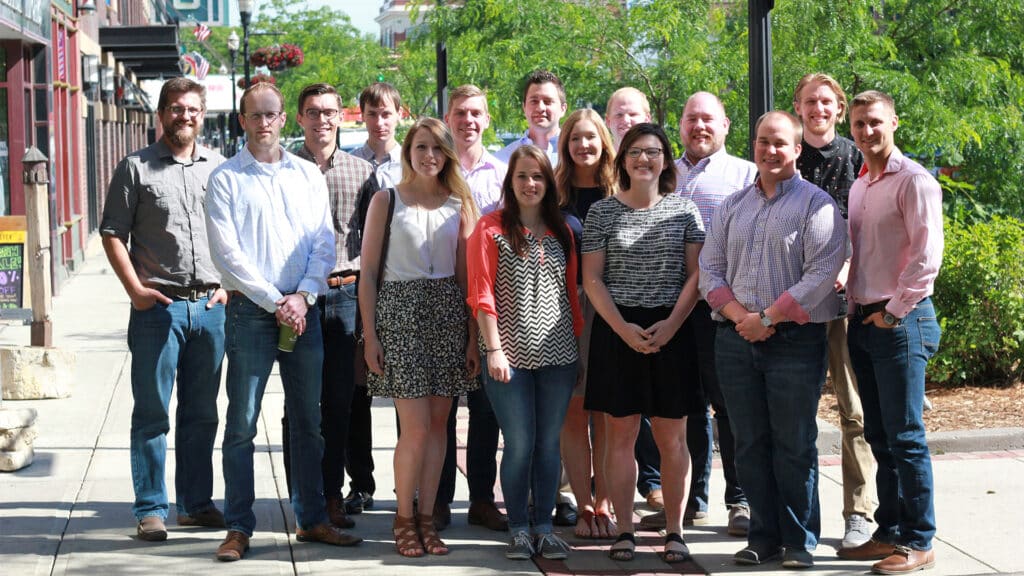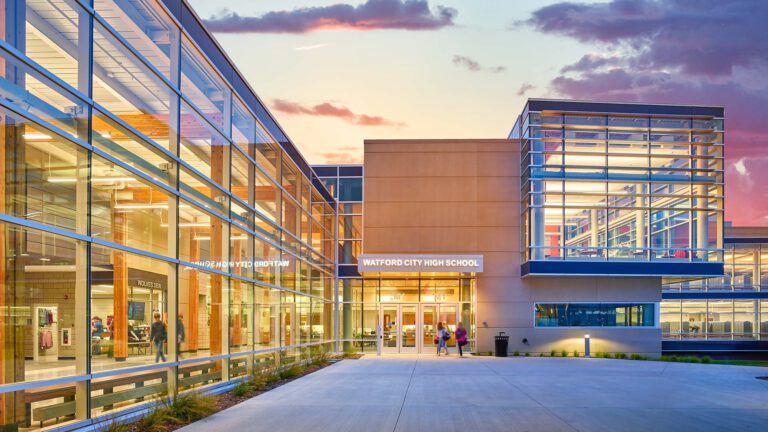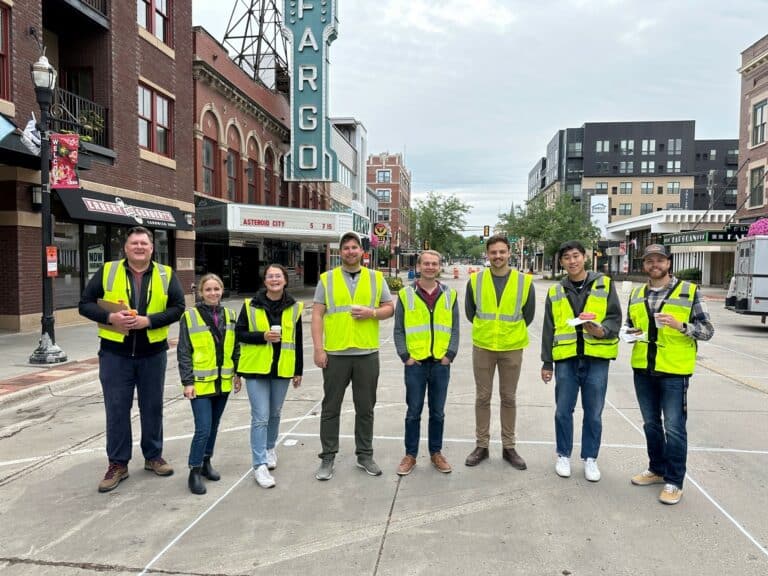As if hiring great talent—or any talent—wasn’t already hard enough, it just got harder. From an NFIB May 2019 survey, as reported by S&P Global Market Intelligence, “The percentage of firms hiring or trying to hire rose five points to 62%. However, a record-high of 25% firms cited the difficulty in searching for qualified workers as their “single most important business problem.”
Running another ad simply won’t solve your problem. Read on for a solution that has been working for seven years for an architectural firm, in a market where there has been an acute shortage of qualified talent. It can work for you too.
If you’re like many companies, your leadership team is tapped out. They are cranking at full steam. They don’t have enough strong talent below them to delegate tasks. To grow, you need to create a pipeline of talent developing within your company. But how?
Best practices like posting jobs online, paying for referrals, hiring outside recruiters and attending job fairs have typically worked, but in this hyper-competitive environment, they are falling short. Companies are suffering from attrition at higher than usual rates, and those people must be replaced in addition to filling new positions. More and more candidates receive multiple offer letters.
If you’re serious about growth and in business for the long term, you must create a custom recruitment process to build an internal leadership pipeline. Commit to taking on interns every year from now on. Build a partnership with a school that turns out gifted graduates. Feed them into your accelerated leadership development program. Develop them, inculcate your company culture, then encourage them into management positions.
Seven years ago, Michelle Mongeon Allen, CEO of JLG Architects, found the company in need of new leaders. At the time, they were a North Dakota-based firm aiming to expand geographically. They knew that in doing so, it was important to transplant their cultural DNA, but with just four closely held partners running the company, leadership capacity with limited.
And so JLG made the decision to cultivate leaders from within, creating a recruiting and training program aimed at new graduates called “JLGdna”, an acronym for Developing New Architects. Tapping their long-time relationship with North Dakota State University (NDSU), they started recruiting from the top of the school’s graduating class each year and then fast-tracking their development through JLGdna.
JLGdna was created with four primary development objectives for the new graduates:
- Build in-depth knowledge of building technology and construction so that they can be better architects.
- Learn the JLG tools, processes and standards for project delivery.
- Develop strong peer relationships.
- Get professionally licensed faster than the national average.
Here are 5 key steps to creating a powerful college recruitment strategy:
1. Find a school that can produce great candidates for you (who may have leadership potential) and build an employer brand there, recruiting all the time.
When you are sure about the interns’ technical competence you can focus on what you really need: recruiting interns and recent graduates with management potential.
2. Make a multi-year commitment to this strategy (provided it is effective for you), even in a down year. This isn’t about short-term employees. This is about 3, 5 and 7 years for now, or even longer.
There will be times when you’ll be tempted to freeze recruitment because growth is slow or cash-flow is tight. But you must show your long-term commitment to growth and keep the program running. Nurture your reputation at the college(s) over the long term, perhaps slowing down rather than implementing a full hiring freeze. Hard times can also be opportunities to recruit even higher quality talent that went elsewhere in the past, and to use them to replace any underperforming people on your team.
3. Develop and project a clear higher-level benefit for coming to work at your company.
Enhance your reputation as a company that develops leaders by promoting employee benefits and features such as fast track promotion, accelerated learning/training and mentoring programs. Promote those benefits heavily. Gain advantage over competitors by being a constant presence in the college through guest lecturing, sponsorships and recruitment events.
Shawn Senescall, a JLG project designer who was recruited while he was enrolled at NDSU, said JLG was always well ahead of the game in advertising for open positions.
JLG made its mark on him personally during a recruiting lunch-and-learn event hosted at the college. JLG’s former CEO, COO (Allen, now CEO) and Director of HR brought in pizza and talked about JLG in order to attract students who shared the company’s values, goals and aspirations. Senescall said he came away amazed and surprised at the strategy for growth and the company goals and values they discussed.
“For me, that meeting and the energy and what they had talked about convinced me that it was kind of the company that I eventually wanted to work for after school,” said Senescall. “I still remember to this day. It was such a great presentation.”
At the time of hiring, assessment tools can help capture the performance profile you are looking for and help you interview with a high level of rigor. Once hired, have an individual success measurement system in place that the fresh-out-of-school employees respect so they can receive and perceive “fair grading” and steady advancement – just like in school.
Your personal commitment to your talent pipeline is essential. Recruits who know the CEO is personally interested in developing interns and who personally shows up and interfaces with candidates and new hires is a powerful attractant, one that big companies can’t afford to do.
Senescall recalls when he received a personal outreach by Allen. “I remember Michelle had emailed me and wanted to have coffee with me to talk about JLG and talk about potential in JLG and growth and things like that,” said Senescall. “It was just the idea that someone like Michelle would take a half an hour and have coffee with a college student who was interested in her company. And that told me that all the values and the goals that they had talked about as a company wasn’t just talk. But that JLG was committed to bringing in great students. And that gesture was really what kind of sold everything for me, it drove everything home.”
The primary component of JLGdna is the peer resource group. JLG conducts specific training for this cohort at least once a month, bringing in experts from across the company to talk about various aspects of project delivery, the project process, and firm operations, so program members learn firsthand.
“In terms of recruiting, we are able to communicate our unique differentiator – you’re actually going to be part of a group that’s getting really special attention,” said Allen. “We thought it really spoke to what that generation of talent was looking for.”
4. Deliver on your promise when you hire them.
Year in and year out, deliver that unique benefit and survey your recruits to see if they really feel you have been great to them. The most powerful proof of a successful program is high retention and promotion, and the most successful testimony to be given is from someone who went through it themselves.
Keep your promises and deliver everything you promised to the talent in your pipeline. This kind of college recruitment process together with quality onboarding and an in-house career development program are enablers for growth, because you decrease the frequency of desperation-style recruiting. What’s more, it drives a learning culture throughout the company, accelerating the firm’s capabilities and knowledge base.
5. Quantitatively monitor the success of your program over time. Adjust as needed and connect your success to the investment you made years ago so that you continue to maintain that investment.
What gets measured gets done. Put appropriate metrics in place from the start and evaluate the return on your investment in college recruiting. Retaining satisfied and engaged employees is a great cost saver. Remember, a successful hire is one where the recruit stays long enough to repay all their salary, recruitment, training costs and more. For JLG, the JLGdna platform has been remarkably successful over the past seven years, shaving more than a year off of the national average for licensure and enjoying a 80+% retention rate of individuals who have moved through this program, with direct colleagiate recruiting now scaled across a five-state area.
As a recruiting and development strategy, JLGdna has been instrumental in JLG’s transformation from a small, regional generalist firm to a nationally recognized, 130-person, 100% employee-owned architecture practice across twelve locations and now headquartered in Minneapolis, MN.
If you are aiming to grow significantly over the coming decade, then you must envision a full roster of executives. Put in place a college recruiting program that expedites the development of the leaders you know you’ll need. There is no time to be lost.





